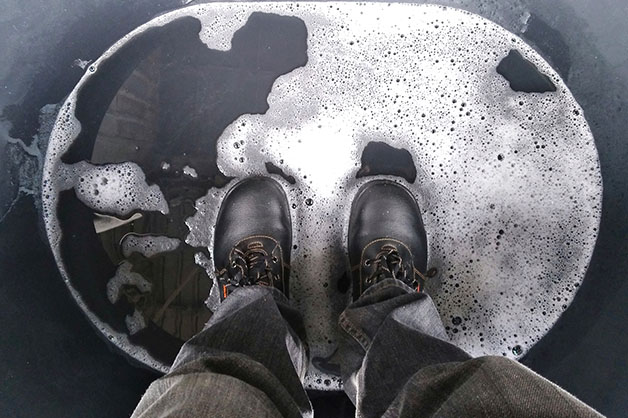Environmental issues are a constant threat to food safety and have to be continuously managed throughout the process. These risks, however, can be mitigated through the use of interventions and strategies to minimize them.
Foot & Equipment Traffic
Environmental pathogens such as Salmonella and Listeria, and their introduction into the production process, can be a constant challenge to manage, but with the right tools these issues can be greatly minimized.
Minimizing microbial introduction into the process starts at the front door. Meritech and Clean Logix both offer excellent options for automated boot scrubbers. A rigorous preventative maintenance and cleaning schedule, including the replacement of worn brushes and frequent cleaning, is critical and must be followed to maximize their effectiveness.
RMC’s DoorGuard central foot foamer systems are placed at entrance points to minimize the introduction of bacteria from foot wear and equipment traffic, as well as the opportunity for cross-contamination. Commonly, a quat-based sanitizer such as RMC’s F-29 is utilized. Foot foamers offer longer lasting placement of the chemical verses a single application that is delivered via a sprayer.
For facilities that rely solely on dry sanitation, and where minimizing water activity is crucial, Devere Security Floor Treatment is an excellent option. This alkali-peroxide powder does not require water to activate and can be added to a boot scrubber mat that is staged in front of main doors, or lightly broadcast in front of roll-up and sliding doors.
For environments exposed to continuous water activity, such as found adjacent to equipment wash areas, RMC’s FloorQuat offers an excellent alternative. This product requires moisture to activate and offers long-term intervention against environmental pathogens.
In-Process Hand & Equipment Sanitation Considerations
Handwashing is critical to maintain food safety and is an important pre-requisite prior to entering the production facility. While it is a common practice to wear gloves while handling product, they need to be cleaned and/or changed often. Additional intervention(s) after the handwashing station further reinforce and encourage hand hygiene and GMP practices.
Alpet E3, an ethanol-based hand sanitizer is easy-to-use and can be dispensed via a wall-mounted or touchless dispenser stand. BAC STOP™ 3A is an additional option for use as a hand sanitizer. It is also an ethanol-based product containing hydrogen peroxide as well as glycerin which helps minimize hand irritation after continued use.
Equipment cleanliness and sanitation during production, especially around product contact zones, and those in close proximity, is just as important as hand hygiene. Cross-contamination issues are more likely to occur due to contact between dirty surfaces and employee handling practices. Alpet D2 is a great cleaner and sanitizer product that is especially designed for cleaning sensitive food contact areas such as control panels and anywhere that water is not a viable option. The product comes in both a spray and a disposable wipe and is ready-to-use.
Environmental Air - Maintenance & Monitoring
The air circulating throughout the production process can often be overlooked, but can have a major impact on both product quality and the minimization of environmental issues correlated to cross-contamination and microbial growth.
A robust sanitation program, along with a strong preventative maintenance program, ensures that these types of issues are minimized. All functions of the system have to be continuously maintained, including frequent cleaning/replacement of all air filters, along with those that are part of a compressed air system. Refrigeration systems and associated cleaning activities are also critical. It is important that the system is maintained and cleaned under the master sanitation schedule.
Cleaning activities can be easily verified by performing air testing, a service that RMC provides on a routine basis. Test results exceeding the recommended guidelines are often a result of not adhering to either the master sanitation or preventative maintenance schedule. If microbial results still exceed the recommended threshold after cleaning, fogging and/or foam cleaning, using either a quat sanitizer such as F-29 or peroxyacetic acid such as EnviroGuard® Sanitizer can be used to successfully reduce these numbers down to acceptable levels.
Implementing and maintaining intervention control(s) into your process is important to help minimize environmental issues. These simple, yet often overlooked components, help fortify your food safety system and will increase your level of confidence. Remember, proactivity is less costly in the long run than reactivity!
For more information, contact us.

